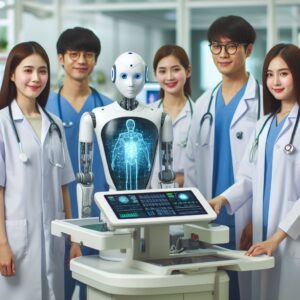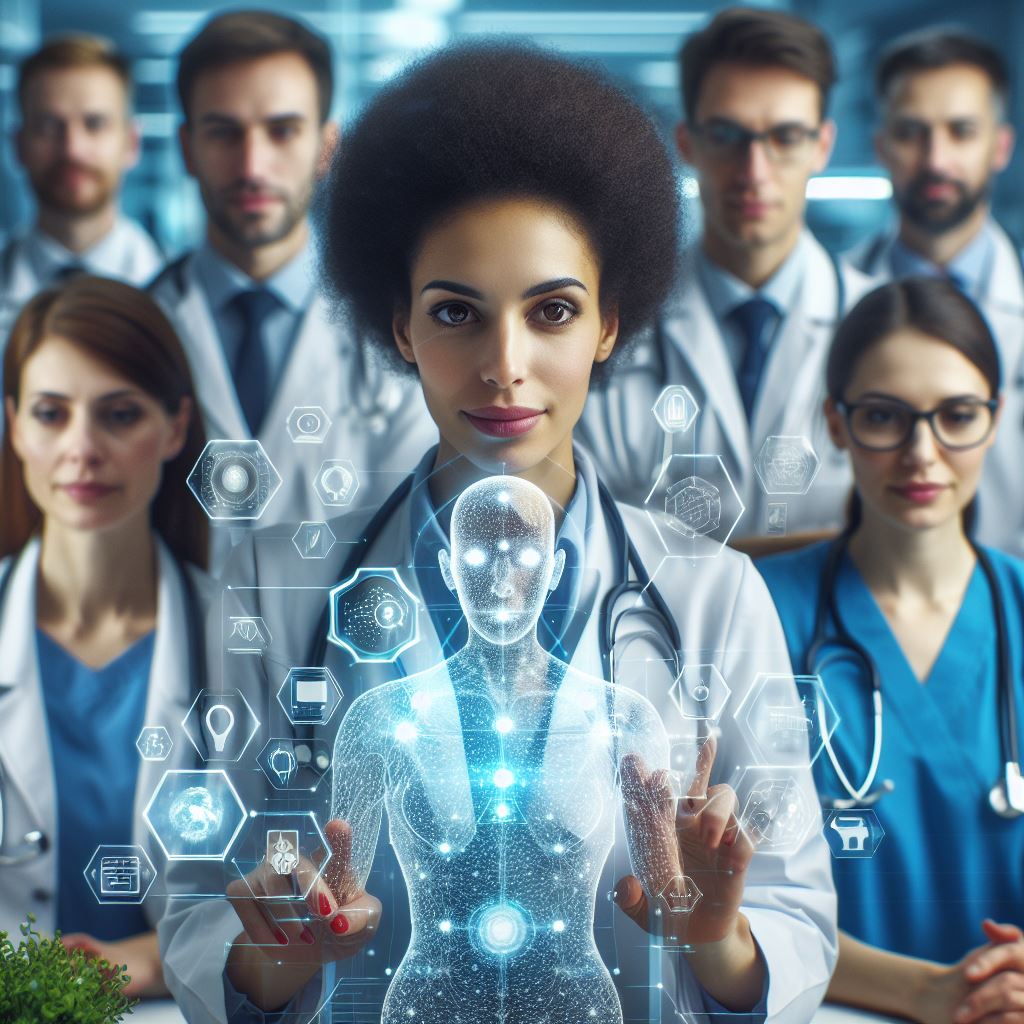Introduction
Humankind has always tried to extent their life span on earth while ensure a quality of life, for which health is essential. Innovation has always led the healthcare sector to adapt to newer technology as in comes. Healthcare sector is a sector which is closely linked to research & development of innovation that assist humankind to live a life with dignity & full enjoyment of it. Doctors in India has always tried to incorporate new technology into their diagnosis & treatment plans. Healthcare sector of India uses various AI algorithms during different phases of the treatment a patient receives.
Medical Imaging Analysis
This AI algorithm can analyse medical images produced by machines already used in the medical field like X-ray, CT scans, MRI scans, Ultrasounds among others. This instrument is used to act as an aid in the diagnosis & treatment, assess the results of the treatment while also monitoring the impact of the treatment on the patient. The algorithm can detect subtle changes in images that an radiologist might have skipped, which can lead to a more accurate diagnosis. Radiologists in India use various AI tools like Qure.ai which is an AI powered radiological tool that analyses reports derived from X-rays, CT scans, and MRI to assist radiologists in the detection of abnormalities & other medical conditions. This algorithm is widely used in cancer detection, & each software has its unique technique to get result. Software like Niramai who uses thermal imaging to detect early stage tumours. Whereas Predible Health AI algorithm uses CT scans to assist in the early detection of cancer the software.

Natural Language Processing
It is a branch of AI that can understand, interpret, & generate human language. NLP basically processes and analyses text & speech data. In the healthcare sector, NLP are used to analyse patient data like doctors clinical note & summaries, it can help keep a record of all patient medical professional interaction. It can also assist in a more accurate & timely diagnosis, as the NLP will have unlimited data to analyse & compare with. EZDI offers a suite of NLP solutions that can recognise medical terms & generate medical reports that are accurate, it helps in medical transcription & clinical documentation of the patient doctor interactions. MModal’s AI tool converts the conversation between patient & doctors in real-time & as the software is able to recognize medical terms it can generate accurate medical reports.
Clinical Decision Support System
It usually has a database of medical knowledge, industry specific algorithms, medical history, knowledge of all dices around the globe among others. This can mean that patients can get a more customised treatment specific to their condition & lifestyle. The system can analyse & alert of potential allergies or reactions that a patient might have from a specific treatment. The system will promote a more evidence based approach while making a treatment plan. Pulsus Healthtech’s software solution takes help of Machine Learning (ML) technology to analyse & compare patient data not just with their history but also of the family. It supports doctors by giving real-time support to them as the algorithm processes the data collected behind the scene. Software providers like Elico Healthcare Services provides a flood of solutions to customize to the needs of the patient & the hospital.
Remote Patient Monitoring
RPM allows healthcare providers to monitor patients outside of the traditional clinical setting via the use of wearable, sensors, mobile apps powered by Internet of Things (IoT) technology. It can improve the treatment outcomes by providing a continuous & real-time monitoring while also detecting issues early on which can lead to a more efficient intervention resulting in a better outcome. Mobile applications like MyHealthcare & Practo ebables the virtual interaction between patients & doctors, its helps to track their health status while also receiving timely reminders of medical dosages & appointments with their patients. While Medtronic, Dozee, Tricog, Cardiac Design Labs, Portea Medical among others remotely monitor vital sings from glucose level to heart rate & blood pressure among others. These corporations provide wearable devises to perform these tasks.
Drug Discovery
It is the process of identifying new drugs or compounds that can be used to treat or cure diseases. The process involves several steps like target identification, lead discovery, lead optimization, & preclinical & clinical development etc. The technology can analyse large datasets, predict drug-target interactions, & identify candidates for new drugs with higher accuracy & speed. Organisations like BioXcel Therapeutics, C-CAMP, GVK Bioscience, Strand Life Sciences, Invenire Labs use ML algorithms to accelerate the process of developing new drugs that can be used to treat patients. ML helps faster identification of potential candidates for new drugs. This is possible as ML algorithms can calculate multiple permutation & combinations of calculations in creating a drug, this takes lesser time as compared to the manual process one would have to make.
Chatbots & Virtual Assistance
Bots that have the medical history of patients can give primary assistance to the patient like a family doctor on their medical conditions, before consulting with a doctor. The benefit of this software is that it will be available 24/7 & can give out personalized output during emergencies. It can also handle routine administrative tasks like appointments, prescription refills etc which can free up space & time for doctors to focus on their patients. Platforms like Haptik, Niramai, HealthTap interact with patients & provide real-time support to patients. These software has the medical history of the patients in their database, which helps these algorithms to provide personalized solutions to the patient. But should realise that this self-use AI is not a replacement for doctors but only an emergency support mechanism. CgniCor’s use ML algorithm to provide healthcare information to the patient.
Medication Management
It is the process of ensuring that the patients receive the right medication at the right doses & at the right time. It involves several steps, including medication reconciliation, prescription, dispensing, administering, & monitoring. Electronic systems like Medication Administration Record (MAR) can be used for tracking medications that are being prescribed & administered to patients. These systems can help healthcare providers to monitor the use of the medication, identifying potential errors or/& drugs interaction with the patient, while ensuring that patients receive the right medications at the right time.
Conclusion
The combination of AI in medical care has introduced another time of clinical advancement. From upgrading clinical imaging investigation for exact determinations to enabling natural language processing to streamline patient records, AI is transforming the way healthcare is delivered. Clinical decision support systems provide tailored treatments, while remote patient monitoring ensures real-time care. In drug discovery, AI accelerates the identification of potential candidates. Chatbots offer 24/7 personalized assistance, and predictive analytics helps identify high-risk patients. Medication management and robotics further improve patient care.
This technological revolution is not a replacement for medical professionals but a powerful ally in providing high-quality healthcare.
References
- Puaschunder, J.M., 2019. Artificial intelligence in the healthcare sector. Scientia Moralitas-International Journal of Multidisciplinary Research, 4(2), pp.1-14.
- Shaheen, M.Y., 2021. Applications of Artificial Intelligence (AI) in healthcare: A review. ScienceOpen Preprints.
- Kumar, A. and Joshi, S., 2022, March. Applications of AI in healthcare sector for enhancement of medical decision making and quality of service. In 2022 International Conference on Decision Aid Sciences and Applications (DASA) (pp. 37-41). IEEE.

